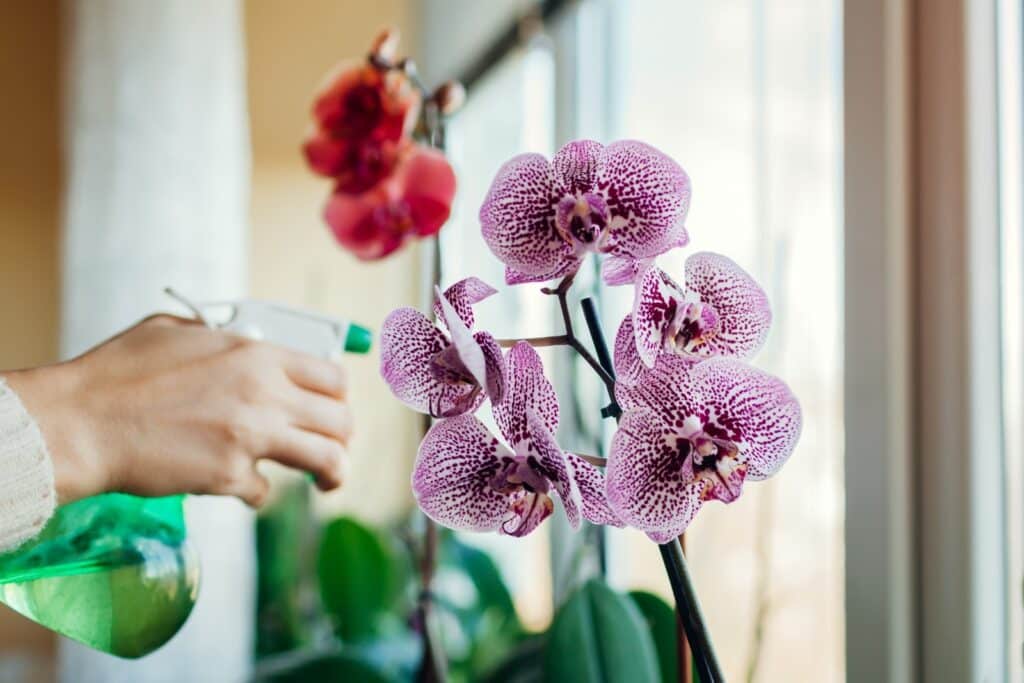
Originally from tropical countries, the orchid has colonized a large part of the globe. The orchid family is the most varied in the world with more than 25 000 species!
The most common variety in commerce is certainly the Phalaenopsis (hybrid). Otherwise known as the butterfly orchid, because of its characteristic shape and its pink, purple and white hues.
Fact: although orchids are usually seen in pots, a lot of them naturally grow on tree! They get their nutrients and moisture from the atmosphere. However, a specific climate is needed for them to grow properly.
PLANT
The orchid is rather sensitive regarding its exposure. In direct contact with the sun it risks to die, but if it does not receive enough light its flowers will have difficulty to grow. So choose a bright place but without direct contact with the sun.
Opt for a transparent pot! It is preferable for the good development of the roots that they are in contact with the light.
Regarding the temperature, the orchid will easily adapt to the temperature of your home. During the summer months, you can take your plant out in the garden or on the balcony to let it get some fresh air.

CARE
Water twice a month in winter and once a week in spring and summer. Spraying water on its leaves will do it a lot of good.
If needed, bring some liquid fertilizer for orchids when your flower has just produced new leaves. This will allow it to make up for its loss of energy.
Once the blooming is over, cut short the wilted stems that have given flowers to see them bloom again.
Re-pot your flowers every 2 years with Potting Mix.
The main enemy of the orchid is the mealy bug.
Excessive watering also favors the appearance of spots and fungi.

ENJOY
Indoors, your orchid can bloom at any time of the year.
It will give flowers for 2 to 4 months, or even more depending on the care you give it.
